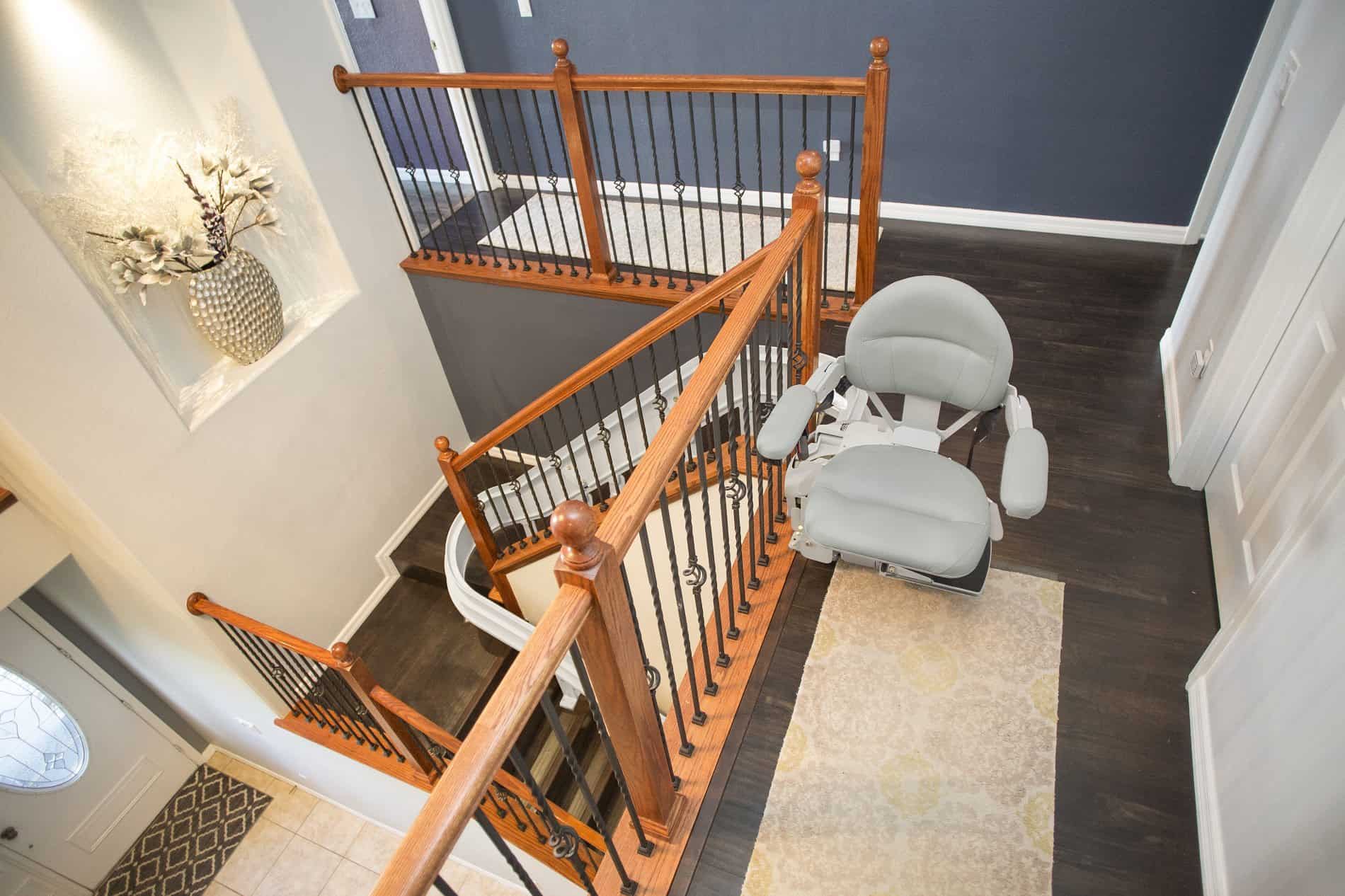Mobility solutions can change lives, but there may be some disadvantages to specific devices in certain settings. Depending on the nature of the user’s limitations and the configuration of the home, there may be some drawbacks to certain devices and equipment. Thinking about a stairlift? Consider the ups and downs of these aids first!
Depending on the home environment and nature of any physical disabilities or limitations, mobility aids can change lives for the better. A stairlift, for instance, offers a way to facilitate access, improve convenience, and increase safety in the home. But are there any disadvantages of installing a stairlift? Consider the following ups and downs first regarding having a stairlift in your home:
The Upside of Having a Stairlift in Your Home
It is estimated that around 7 million people live with physical limitations or disabilities in this country, mobility aids and equipment can help! If you live with mobility challenges, a stairlift can make it a lot safer while accommodating your independence. There are many perks and advantages to installing a stairlift in the home, which may also contribute to aging in place for seniors, but more on that soon!
Here are some of the ups of a stairlift at home:
- A stairlift may be cheaper than you think! In fact, many are covered by insurance but talk to your healthcare provider and mobility retailer to learn more. The truth is, stairlifts are becoming more affordable and are a cost-effective alternative to in-home support.
- Stairlifts are installed quickly and professionally by the retailer you buy from. Never purchase used equipment from individuals; go with a lift from a qualified vendor.
- Stairlifts do not obstruct or impede access for others in the home. They do not take over a stairway, and the seats are easily folded in to maintain a wide berth for others using the steps.
- Stairlifts allow access to upper levels of the home safely, providing a comfortable and convenient transfer up and down stairs, steps, and risers in the home.
- Stairlifts can be installed inside or outside.
- A stairlift can contribute to greater independence and autonomy by allowing the user the ability to complete tasks, ADLs, and other activities with ease.
- Stairlifts lower the risk of a nasty fall and subsequent injury.
- Stairlifts- and other mobility aids- can provide an enhanced enjoyment of your surroundings. You can access and utilize upstairs and downstairs with ease, comfort, and safety.
- You are at a decreased risk of strain, stress, and injury when you use a stairlift to ascend and descend stairs in the home.
- Stairlifts are comfortable. The padded seats provide a smooth ride with a secure safety belt.
- Mobility aids can improve self-confidence and a feeling of autonomy for the user. Aids like lifts reduce your need for assistance, which can be liberating.
- Want to remain in your own home across your lifespan? Stairlifts allow many consumers to age in place, remaining in their own dwelling as they get older.
Always purchase mobility aids and equipment from qualified retail professionals for best results and optimal satisfaction. You should never allow anyone other than a qualified technician install, service, or modify your stairlift; it can cause damage and may nullify any existing warranty that you have.
The Downside of Having a Stairlift in Your Home
As with anything, there may be drawbacks. Even the most useful of mobility aids may have some downsides in certain situations or living environments. Here are a few disadvantages of some residential stairlifts. Talk to a mobility retailer to learn more or to find an alternative mobility solution for your living situation.
Some downs of having a stairlift in your home might include:
- Residential stairlifts may have lower weight capacities than commercial or bariatric lifts which may be a disadvantage to many consumers. Typically, a residential stairlift has a weight limit of 300-400 pounds; bariatric lifts may have a weight capacity of up to 600 pounds.
- Residential stairlifts are not recommended for individuals that rely on a wheelchair or scooter. In these instances, other aids may be warranted to access steps, stairs, or upper levels of the home environment, like a porch lift or ramps.
- A stairlift only provides access to a single level or floor. That is, unless you install multiple lifts, you may still lack access to upper or lower levels of the home. Multiple lifts could become complicated and possibly expensive.
- Stairlifts are not a toy, though they may be tempting to children or pets. Stairlifts should be treated with care to prevent damage or mishap.
- It is recommended that stairlift users never carry open liquids during transfers to prevent potential damage to their equipment.
Thinking about a stairlift in your home? Talk to the team of mobility professionals at Pacific Mobility today!
President, Husband, Father, Grandfather Graduate of UC Davis- Bio Sci Major- Go Aggies! Jeff has extensive experience in all of Pacific Mobility’s products and services, and specializes in accessibility products as well as stairlifts, ceiling lifts and custom wheel chairs. His hobbies include spending time with family, gardening, mountain biking, exercising and off road motorcycle riding.
24 years as Owner/President of Pacific Mobility Center – selling, installing, and servicing stairlifts, porch lifts, ceiling lifts, pool lifts, handicap ramping, specialty wheelchairs, scooters, power wheel chairs, and other power mobility devices
Certified Environmental Access Consultant since 2008
Licensed General Contractor since 1998
Certified Aging in Place Specialist since 2016
Board Member for Home Access Professionals
Member of Association of Members of the Accessibility Equipment Industry (AEMA)




